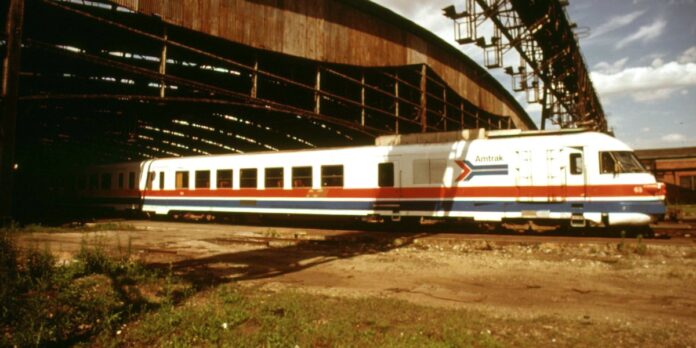
Every day, several speeding Amtrak trains slow down from a rip-roaring 110 miles per hour to a 30-mile-per-hour crawl as they navigate a tight turn through a 151-year-old tunnel.
Built in 1873, the Baltimore and Potomac Tunnel was hailed at the time as an engineering marvel. It connected Washington, D.C., to Baltimore by rail and allowed farmers from Maryland to bring their crops to markets in the city. Now, more than a century and a half later, the 1.4-mile tunnel is the poster child for the country’s neglected rail infrastructure that has been so often caught up in political squabbles, leaving everyday citizens—in this case commuters—to suffer the consequences.
Last March, Amtrak, armed with $66 billion in funding from the 2021 infrastructure bill, began a $6 billion project to build a new tunnel that’s scheduled to open in 2035. That was just one of dozens of rail updates across the country that have started since the bill was passed.
“Right now, we’re primarily trying to claw 19th century and 20th century assets and pull them into the 21st century,” Amtrak CEO Stephen Gardner told Fortune in an interview.
In fact, some trains traverse infrastructure so old it may have carried Civil War veterans on the same tracks that helped the pioneers settle the West. Along with the Baltimore and Potomac Tunnel, Amtrak has a smattering of similarly antiquated infrastructure throughout the Northeast. Elsewhere in Maryland, trains rattle over the Susquehanna Bridge that was built in 1906, when Theodore Roosevelt was president and there were still only 46 states in the U.S. Meanwhile, the Sawtooth Bridge, built just a year later, still shuttles commuters across northern New Jersey.
Bridges and tunnels more than a century old are among the most eye-popping examples of the country’s aging rail network. But throughout the U.S., there are newer, but still outdated, pieces of infrastructure that limit train speeds, regularly causing congestion and delays. Decades-old tracks mean that, on certain sections of routes, trains can’t accelerate to top speeds, rendering modern locomotives moot.
As Amtrak’s backlog of repairs accumulated over the years, lawmakers became less and less interested in ponying up the money needed to make them. That meant as infrastructure continued to languish, the price tag to fix them kept going up, which only made it an increasingly unappealing investment. Before the infrastructure bill, Amtrak had never received so much funding from the federal government, which subsidizes much of the company’s capital expenditures. Like most passenger rail operators, Amtrak doesn’t make enough money from ticket sales to finance the tens of billions of dollars it would need to regularly upgrade its tracks, buy new locomotives, and invest in new routes. To make matters worse, it’s often caught up in the back-and-forth of congressional politics, making the necessary funding hard to come by.
“If you have to buy new equipment or do major infrastructure moves, you have to allocate money from the government to do that,” says University of Delaware civil engineering professor Allan Zarembski. “That’s what the rest of the world does. And Amtrak historically has been subject to the whims of the current administration or the current political climate.”
Across the country, investment in infrastructure has lagged. On the Northeast Corridor alone, the country’s busiest train route which runs from Washington, D.C., to Boston, there are $45 billion worth of repair backlogs, according to the American Society for Civil Engineers. The outdated infrastructure along that stretch of the nation’s railroads led to a total of 328,000 minutes of train delays, equivalent to roughly 700 trips from D.C. to Boston, according to the same report.
As of last November, Amtrak made a significant stride in addressing the accumulation of repairs along the Northeast Corridor. In conjunction with the Department of Transportation, Amtrak secured $16.4 billion in funding for 25 projects along the route. Among those projects is the construction of a new Hudson River Tunnel between New York and New Jersey. The original was built in 1910 and suffered severe saltwater damage during Superstorm Sandy in 2012. Once the new tunnel opens, the original would close for repairs before eventually reopening for the more than 400 daily trains that travel on that route.
In Maryland, the Susquehanna Bridge is set to receive $2.1 billion for a faster track. Throughout the rail corridor, outdated tracks force trains to slow down, preventing them from hitting their top speeds. Another set of repairs slated for a 117-year-old bridge over the Connecticut River would allow trains to accelerate from 45 to 70 miles per hour.
“We’re still operating basically, in many respects, a 19th century railway network that we’ve incrementally improved,” Gardner said.
Source link





